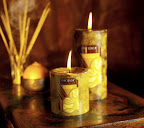HERBAL MEDICINE FROM SANDALWOOD

Sinonim : Santalum verum L. Santalum myrti folium Roxb. Sirium myrtifolium L
Familia : Santalaceae.
Analysis
Plants took the form of the tree, high between 12 and 15 metre. Skin had rough wood, was grey. The leaves were easy to fall. Grow in the hot and dry land, in the land that many of his limes. The part that was used by Wood.
The Local name:
The Local name:
VERNACULAR NAME:
Candana (Minangkabau) Tindana, Sindana (Dayak); Candana (Sunda); Candana, Candani (Jawa); Candhana, Candhana lakek (Madura); Candana (BeIitung); Ai nitu; Dana (Sumbawa); Kayu ata (FIores); Sundana (Sangir); Sondana (Sulawesi Utara); Ayu luhi (Gorontalo); Candana (Makasar); Ai nituk (Roti); Hau meni, Ai kamelin (Timor); Kamenir (Wetar); Maoni (Kisar)
The FOREIGN NAME:
The SIMPLISIA NAME : Santali Lignum; Kayu Cendana. Santali Oleum; Minyak Cendana.
All Practical purpose
- Wood:
1. The urinary tract antiseptic.
2. Dysentery.
3. Diarrhea
4. Enteritis.
- the leaves: Asthma.
- Bark/skin the root: Menstruation was not arranged.
The ingredients and the dose:
Dysentery
The ingredients:
1. Cendana Bark 2 gram
2. The leaves of Patikan China 5 gram
3. A little gambir
4. Water 100 ml
The production method: by pouring hot water.
Dosage: was drunk by 2 times a day, the morning and in the afternoon, each time drank 100 ml. For a long time For medical treatment a long time medical treatment: was repeated for 14 days.
Enteritis
The ingredients:
1. Sandalwood (dust) 1 teaspoonfuls
2. Water boiled 100 ml
The production method: by pouring hot water.
Dosage: was drunk by 2 times a day, the morning and in the afternoon, each time drank 100 ml. For a long time medical treatment: was repeated for 14 days.
Asma
The ingredients:
1. Sandalwood (dust) adequate
2. The Tanjung leaves young several sheets
The production method: the Tanjung leaves young sliced afterwards to drying. After dry was added a little Sandalwood dust, afterwards was made cigarettes.
Dosage: was sucked as sucking cigarettes.
Source: iptek
The FOREIGN NAME:
The SIMPLISIA NAME : Santali Lignum; Kayu Cendana. Santali Oleum; Minyak Cendana.
All Practical purpose
- Wood:
1. The urinary tract antiseptic.
2. Dysentery.
3. Diarrhea
4. Enteritis.
- the leaves: Asthma.
- Bark/skin the root: Menstruation was not arranged.
The ingredients and the dose:
Dysentery
The ingredients:
1. Cendana Bark 2 gram
2. The leaves of Patikan China 5 gram
3. A little gambir
4. Water 100 ml
The production method: by pouring hot water.
Dosage: was drunk by 2 times a day, the morning and in the afternoon, each time drank 100 ml. For a long time For medical treatment a long time medical treatment: was repeated for 14 days.
Enteritis
The ingredients:
1. Sandalwood (dust) 1 teaspoonfuls
2. Water boiled 100 ml
The production method: by pouring hot water.
Dosage: was drunk by 2 times a day, the morning and in the afternoon, each time drank 100 ml. For a long time medical treatment: was repeated for 14 days.
Asma
The ingredients:
1. Sandalwood (dust) adequate
2. The Tanjung leaves young several sheets
The production method: the Tanjung leaves young sliced afterwards to drying. After dry was added a little Sandalwood dust, afterwards was made cigarettes.
Dosage: was sucked as sucking cigarettes.
Source: iptek


